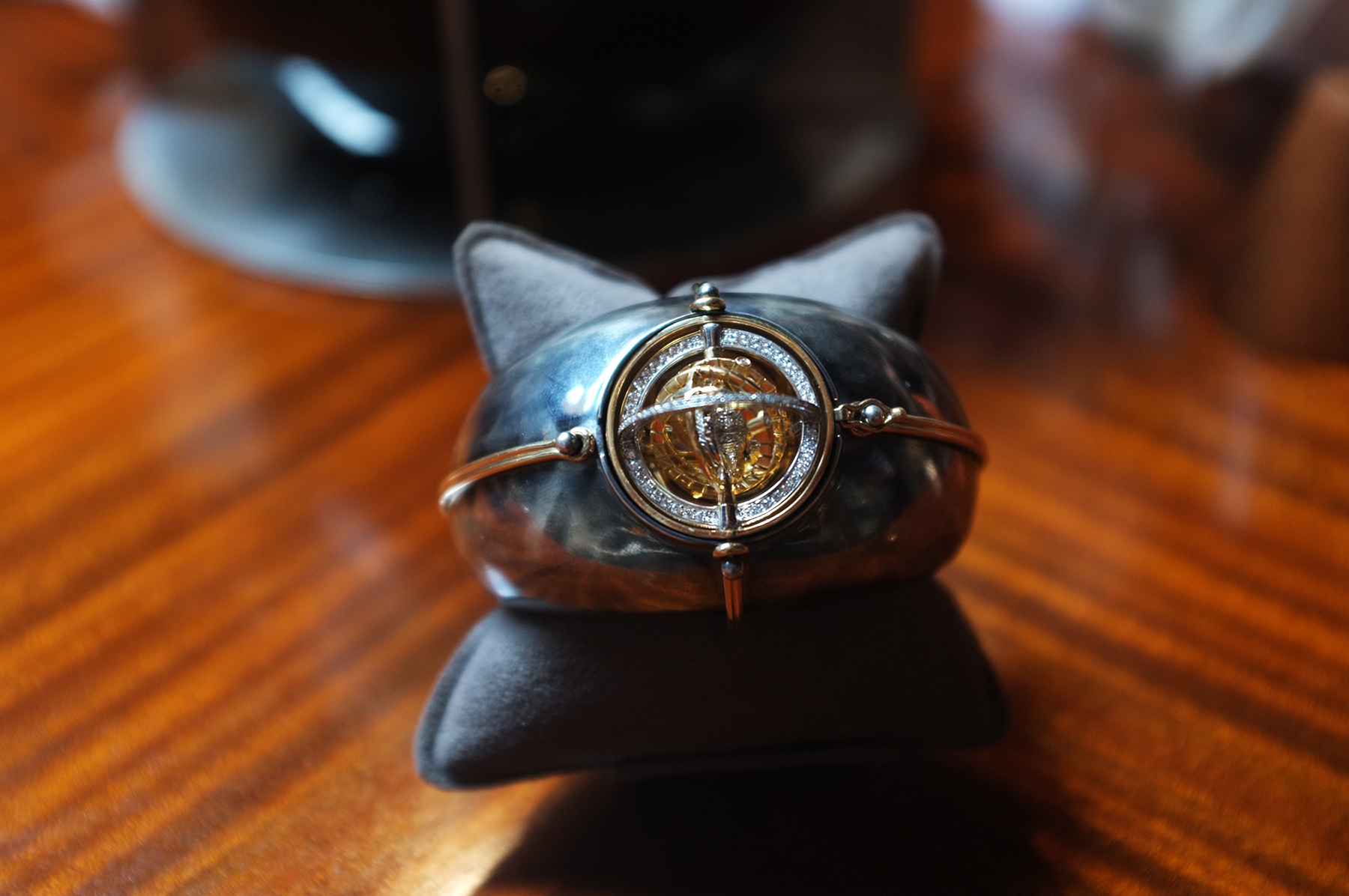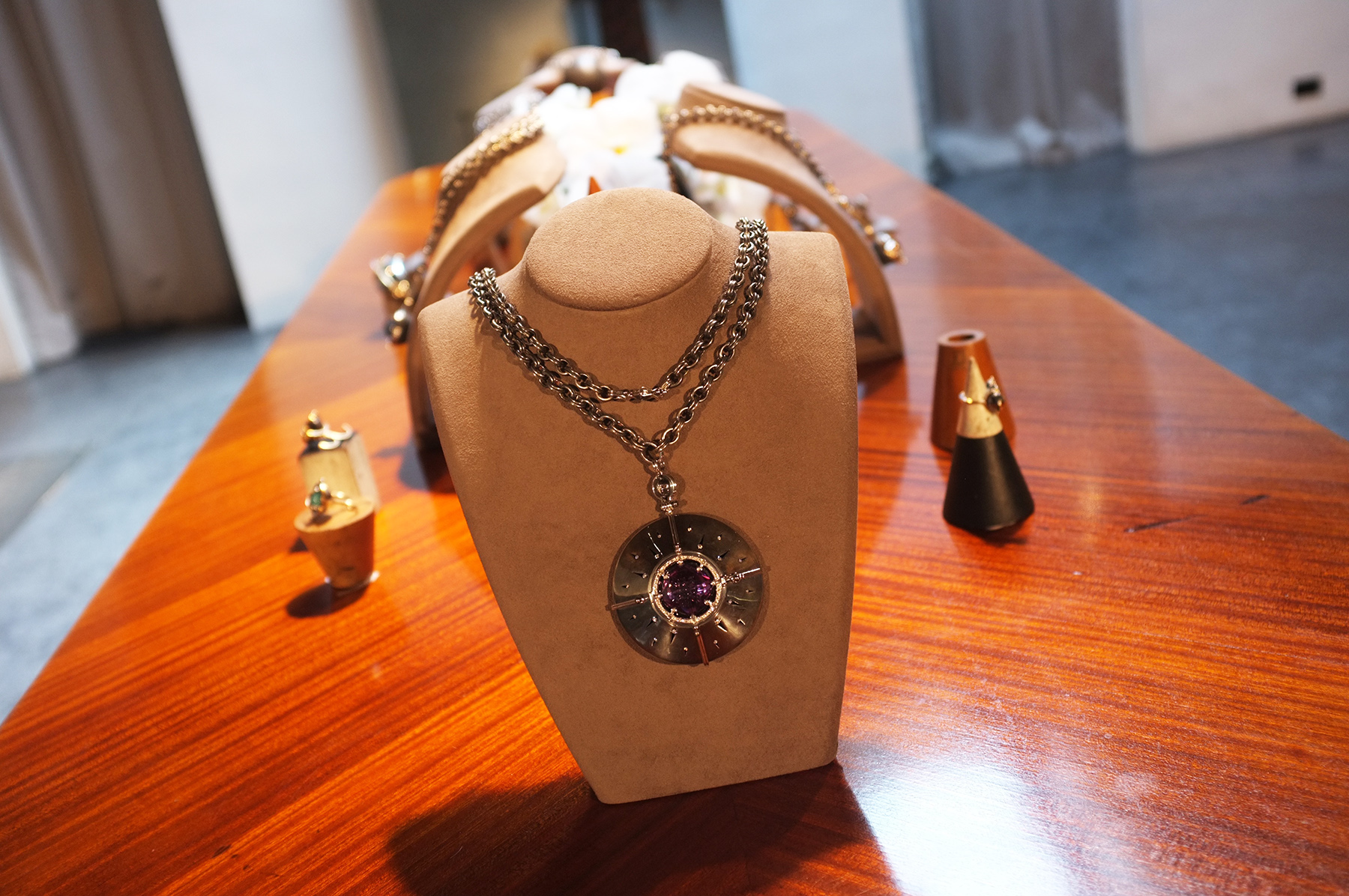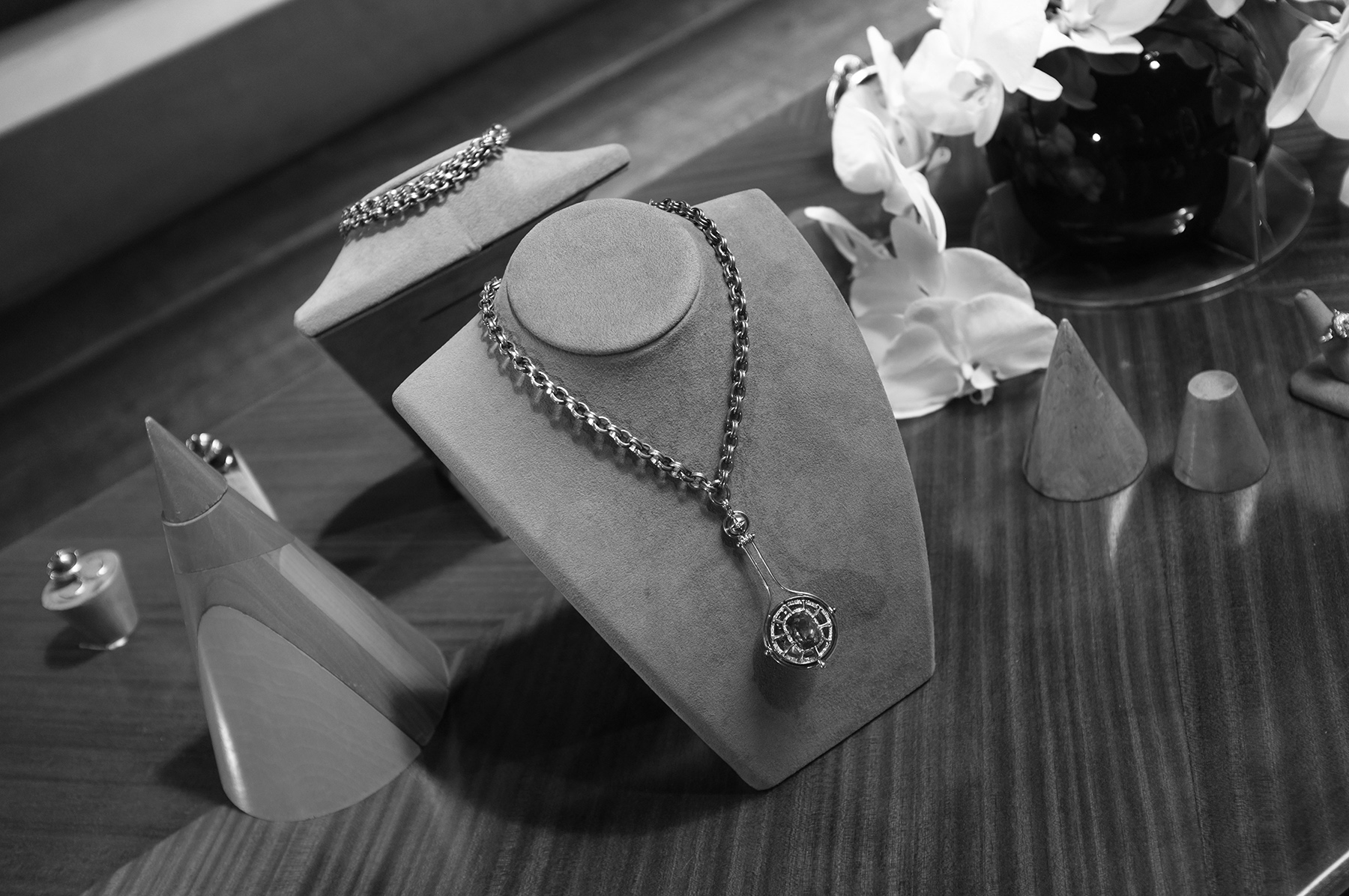text by Darren Luk
Sons Of An Illustrious Father is a three piece indie band that's very DTF. Down To Flux that is. Based in New York, the quirky members Lilah Larson, Josh Aubin and Ezra Miller (who you would perhaps recognize as an actor in films like We Need to Talk About Kevin, Fantastic Beasts and Where to Find Them or his role as The Flash) enjoy defying genre conventions and sharing center stage, alternating between instruments and vocals. They've once called their sound future folk and heavy meadow, but avoid being defined, always experimenting with their sound and making DIY video clips. Although they don't take themselves too seriously, the subject matters that they do explore within their music, continually contributes to social, cultural and political conversations that encompass racial, gender and other global issues. Having released a new album 'Revol' this year and been on tour, we thought it would be fitting to give them a call to catch up on what they've been up to, how their music comes together, issues they are concerned with right now and their favorite phone app.
DARREN LUK: Hey, how are you guys going?
LILAH: Hello! Good, how are you going?
LUK: Good, good! What's happening on your side of the world?
LILAH: I mean generally on our side of the world, it's freaky. We're not doing such a great job as a nation, but as a band in this studio, I think we're killing it.
LUK: You've had a busy year touring, playing at SXSW and released an album 'Revol'. How are you feeling as we come to the end of the year?
JOSH: It's been a roller-coaster. It's been a wild year you know? There's been a lot of learning and feeling.
LILAH: You sound like you’re saying all the things you should say to answer that question.
JOSH: Isn't that what I'm supposed to be saying in situations like now?
LILAH: Yes Josh, yes.
LUK: How would you describe some of the best or worst things that's happened on tour?
EZRA: It's like looking for a book in a library and trying to choose one.
JOSH: …Or choosing your favorite page of a book. When you think of a book, you don't think of the individual pages but maybe a blurb of what the book was, and it's more about the essence of the book rather than the page.
LILAH: It's kind of a radical feminist speculative fiction à la Ursula K. Le Guin I would say.
JOSH: Yes, I would also agree with Ursula K. Le Guin.
LILAH: That's the book we've been living in, that we are characters of.
EZRA: It involves things like going to a park in Washington D.C. and meeting a group of circus performers and having one of them teach us about self realization.
JOSH: Did that happen?
LILAH: Yeah! Remember?
JOSH: Oh yes.
EZRA: Or wandering through a lightening storm and holding each other in fear and awe.
LUK: That sounds like a good metaphor!
LILAH: That's not a metaphor [laughs], that actually happened at SXSW.
EZRA: We are living metaphors.
LILAH: Yea, a lot of our experiences are good metaphors.
LUK: Do you have any interesting rituals you guys do like before gigs?
JOSH: Yes!
LILAH: We always hold each other and make eye contact, and sometimes sync our breath to become present.
EZRA: We give thanks. We tell each other that we love one another and that we're thankful for our time. That's the essence. There's a lot of secret rituals, layers and layers from there, but that's what we make sure to do before any show.
LUK: You are all talented multi-instrumentalists. What are your earliest memories of music and how you started?
LILAH: I grew up pretending to play instruments before I could play instruments. My earliest memory was being around instruments and just knowing I was going to play them.
EZRA: I remember a specific drum when I was very young. Some sort of street fair, and there was a drum that could be played even by belligerent children.
LILAH: Yea, I had a tiny, very poorly executed replica of one of Elvis' guitars with his signature on it. It wasn't practically useful but I fake played it.
JOSH: My parents kept a keyboard under their bed, but I was too shy to play it when they were home. When they left the house I would sneak up into their bedroom and play the keyboard under the bed.
LILAH: I did not know that, is that real?
JOSH: Who knows.
EZRA: What was the keyboard really… in this real life metaphor? What's the keyboard beneath your parents bed?
JOSH: Well, just under the bed was a storage of space.
LILAH: Ah, a storage space.
LUK: How do you feel like the dynamic between the three of you influences the way you create your music?
EZRA: It's integral.
JOSH: It's integrated.
EZRA: [laughs] .. It's integral and then integrated.
LILAH: I think that the fact that we are so intimate with each other in our every day lives, and in our relationships in general, creates a space that allows us to be very exploratory in music. We all feel really safe to be weird and vulnerable together and I think that's crucial for whatever artistic goodness we achieve.
LUK: Within the band all three of you interchange between roles, singing and playing different instruments for different tracks. How does the music usually come together and what's the process like?
LILAH: Usually the songs either of us predominantly sing in, we have written at least the bulk of. But, increasingly there are songs that any one of us writes, some parts we feel a certain person should be singing. I think that's just another thing, knowing each other so well and being so comfortable with one another, it happens at this point quite organically. It's just a shared inner knowledge.
EZRA: It's cool because, on this work we are recording right now, there's a song that all of us sing different parts of, that two of us wrote different parts to. There's another song that was written completely collaboratively. There's an evolution, where there are songs that have completely come from a collaborative process instead of just one of us bringing a song to the band. That's always sort of our interest - to keep pushing the boundaries of that interpersonal communion further.
JOSH: We're learning to work together better.
LUK: It's an interesting evolution. In your latest album Revol, you have three songs each that you've each written separately and then worked-shopped together, but how do you choose what works more cohesively in an album?
EZRA: I think we try not to worry. The ship flies itself. We just follow the instructions and remember to work together…
LILAH, JOSH, EZRA: … As a space team.
EZRA: The real answer is that we go through funny dramatic processes to find ordering. A lot of it, is about feeling our transitions and how they give us a sequitur, psychologically or emotionally. So if one song ends like "ooo" then the next songs comes in like "eeeeeerrr."
LUK: What are some challenges you've come across being a band that seeks to defy normative standards in genre, gender and idea conventions?
LILAH: I mean, I think the first difficult thing for anyone in any context trying to defy normative standards is how much the external world wants to keep you inside those standards and maintain them. That's certainly true for us as a band. People have a lot of trouble, for one thing, with the idea that there are three singers and no one person only plays one instrument. It's mostly just about the difficulty, just like having the courage and conviction and righteous indignation, to remember despite what other's externally might impose, that we know what we're doing, we're doing it right, and that's true of person gender expression and also as band, being a weird band.
LUK: Are you guys experimenting on new sounds at the moment?
LILAH: We have a new drum called Tom Cat.
JOSH: Actually, we've kind of had two new drums, compared to the last album.
EZRA: Yea, we're working with more electronic sounds, digital and analogue. There's definitely a new sound. I don't think we've endeavored to attempt to describe or define it yet, but it's maybe we can call it…
LILAH: …Genre queer…our sound uses they, them and their pronouns (laughs).
EZRA: It's like alternative television show theme song.
LILAH: Yea, it's like if you took the instrumental from a musical theatre play and asked a moderately skilled punk band to play it (laughs).
LUK: Your music always explores and actively voices about social, cultural and political issues. What are some issues that you are particularly concerned with right now?
EZRA: Stopping the Dakota Access Pipeline in solidarity with Oceti Sakowin [Camp] and the confederation of tribes that are resisting this pipeline. It seems like it's becoming the paramount issue, one of the great fights of our lives. It's such a critical moment for Indigenous people, First Nations people drawing a line in the sand when it comes to environmental destruction, which is the brink we are on as a species and it's not a drill. I think that it seems like this pipeline becomes the living metaphor as well as the very actual dire call to arms for people interested in, even the short term future of our survival on this planet.
LUK: If you guys were the President for the day, what would you change or do?
EZRA: Enough stuff that we weren't the president anymore.
LILAH: I was going to say, just start a nation state, declare anarchy, formally disband The United States of America and renounce my imperial crown (laughs).
LUK: Ezra, being in an indie band and also working on Hollywood films as well, how do you feel, kind of walking the line between these two different worlds?
EZRA: I think that fine line is a strange way to put it, because at the end of the day we're all just trying to make good work in our various mediums. We come together as a band to be a sort of a single instrument, to have this single medium together. But that's just one of the things that really powers us. I think it's really healthy in the way that each of us express through our own channels separately outside of the band. It's like in a partnership where both people having good stuff happening in their lives.
JOSH: Something like that.
LUK: Are you working on projects separately, musically as well?
LILAH: Yeah, we're all always writing and playing in some capacity on our own. I'm releasing a solo album in January. We're always scheming and working, and scheming when we can be together as much as possible.
LUK: What would you say some of your music influences that you resonate with?
JOSH: The Muppets.
LILAH: The Muppets...let’s see…Patti Smith...
EZRA: The Band.
LILAH: Yea, I'm comfortable with that selection for the day.
LUK: Obviously you guys are tight-knit friends. What do you guys do outside of music?
JOSH: As friends or as enemies?
LUK: I guess, both!
JOSH: Laser tag is epic
LILAH: We're really into the show Daredevil. We watch it together.
EZRA: Yea, we also play Spaceteam the app game.
LILAH: We have a lot of really good meals.
EZRA: We're really into food.
LILAH: We're really good with meals.
EZRA: We do dance and we talk a lot.
LILAH: We talk so much.
JOSH: I spend a lot of time listening, and they spend a lot of time talking.
LILAH: It's not, not true.
LUK:Do you have any hobbies?
LILAH: I like to ferment things.
JOSH: I like the play games.
EZRA: I like archery.
JOSH: I like hiking
EZRA: I like hiking and camping, spending time with nature.
JOSH: Nature's a good thing to spend time with.
LUK: What's your favorite invention and why?
LILAH: I think that funnels are amazing. It's a principle for so many things. You need a funnel for making coffee. A funnel in general is a really important invention. You need them for cars, you need them for coffee.
JOSH: College parties.
LILAH: Any sort of pouring, beers, keg stands
EZRA: My favorite invention is Lilah's favorite hobby.
LILAH: Fermentation, pickling.
LUK: What's a secret talent you have?
LILAH: As far as skills, Josh has an eerie ability to name the year that a film came out.
JOSH: Try me.
LUK: Okay, hmm...how about Blade Runner?
JOSH: 1982
LUK: Let me Google this. Ok…you're right, it's 1982!
EZRA: Ohhh, that's amazing. When you test something like that and like, oh gosh is it going to work when you put this much attention on it, and it does, it's just spectacular.
LUK: What about you two?
EZRA: I'd say the edge where a secret becomes sharable for me in terms of skills sets, would be overtone singing.
LILAH: I'm really good at cutting hair.
LUK: If Sons of Illustrious we’re superheroes, what would be their power and saving people from?
EZRA: We would be a triumvirate sonic superheroes in the most basic sense, if we really analyze what's going on here, from a comic book perspective. We create this triangulation of sound capable of moving things, like the hearts of listeners anywhere.
LILAH: Through a synergistic, telepathic exertion we can heal and move the hearts of those around us.
JOSH: Sound power!
LILAH: A mix of telepathy and sound power.
EZRA, LILAH, JOSH: Working together.. as a space team.
LUK: What's this little thing about space team?
EZRA: It's the app that we told you about we play called Spaceteam.
LILAH: The great producer Howard Bilerman introduced us to this game and we are forever thankful.
LUK: And it's a multi player game?
EZRA: It's a multi player game. You control a spaceship together, sort of Star Trek style.
JOSH: You kind of don't control the spaceship, the ship flies itself.
LILAH: But, you try to prevent catastrophe together. You have to turn all the dials and stuff, and give each other instructions.
EZRA: What's great is that it's not only a great way to past time, but also wonderful communication game, where you have to listen and speak up simultaneously. It's very good for bands.
LILAH: It's perfect for bands.
EZRA: And it fills those gaps of time between a sound check and your show. We highly recommend it.
LUK: Cool I'll check it out! Do you have any upcoming projects for 2017?
LILAH: Well, we're in the studio right now, working on an album.
EZRA: There's literally a track being mixed in the room behind us. Oliver Ignatius, we're at Mama Coco's Funky Kitchen which is a place very near and dear to our hearts. An amazing recording studio, and sort of centre HQ of a musical familial movement happening in Brooklyn, New York. It's great to be back here. We've worked with Oliver for a long time and feel really comfortable with our process with him. He's such a gift to that process. There's a bunch of playing shows, making videos and releasing songs coming up.
LUK: Lastly, for people who haven't heard of know Sons Of An Illustrious Father. How would you describe it three words?
LILAH: Music for you (laughs)… terrible.
EZRA: Down to flux.
Click here to download Sons Of An Illustrious Father's most recent album. text and interview by Darren Luk. Follow Autre on Instagram: @AUTREMAGAZINE









